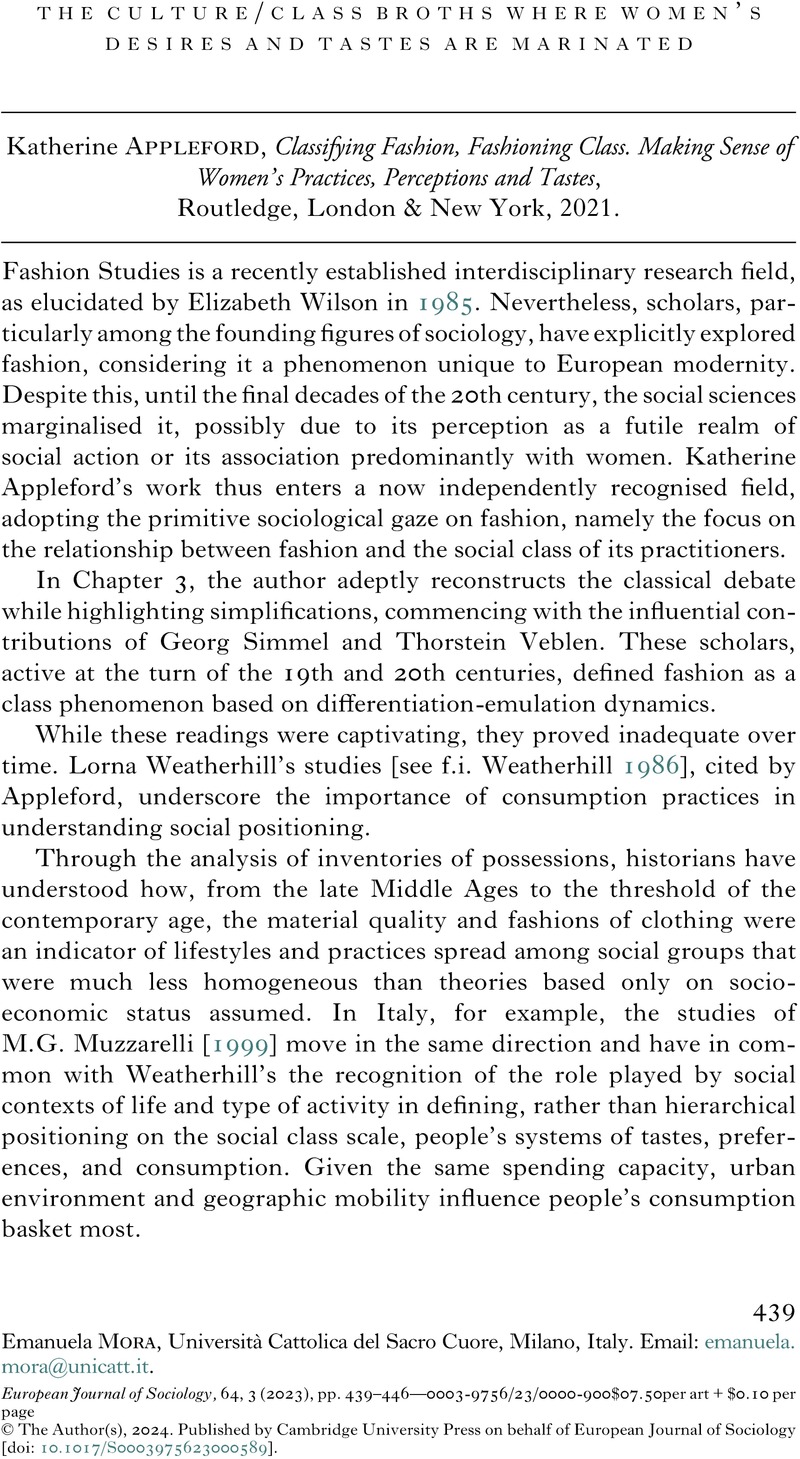No CrossRef data available.
Article contents
The culture/class broths where women’s desires and tastes are marinated - Katherine Appleford, Classifying Fashion, Fashioning Class. Making Sense of Women’s Practices, Perceptions and Tastes, Routledge, London & New York, 2021.
Review products
Katherine Appleford, Classifying Fashion, Fashioning Class. Making Sense of Women’s Practices, Perceptions and Tastes, Routledge, London & New York, 2021.
Published online by Cambridge University Press: 23 April 2024
Abstract
An abstract is not available for this content so a preview has been provided. Please use the Get access link above for information on how to access this content.

- Type
- Book Review
- Information
- European Journal of Sociology / Archives Européennes de Sociologie , Volume 64 , Issue 3 , December 2023 , pp. 439 - 446
- Copyright
- © The Author(s), 2024. Published by Cambridge University Press on behalf of European Journal of Sociology
References
Bourdieu, Pierre, 1984. Distinction: A Social Critique of the Judgement of Taste (Routledge & Kegan Paul, London).Google Scholar
Goffman, Erwin, 1956. Presentation of Self in Everydaylife, (Edinburgh, University of Edinburgh Social Research Centre).Google Scholar
Hall, Stuart, 1996. Who Needs Identity?, in Hall, S. and Du Gay, P. (eds.), Questions of Cultural Identity, Sage, London and Thousand Oaks (CA).Google Scholar
Muzzarelli, Maria Giuseppina, 1999. Guardaroba medieval. Vesti e società dal XIII secolo al XVI secolo, Il Mulino, Bologna.Google Scholar
Simmel, Georg, 1957. Fashion. American journal of sociology, 62(6), 541–558 (Or. Ed. 1904–1911).CrossRefGoogle Scholar
Weatherhill, Lorna, 1996. Consumer Behaviour and Material Culture in Britain 1660-1760, Routledge, London and New York.Google Scholar
Wilson, Elizabeth, 1985. Adorned in Dreams. Fashion and Modernity, Virago, London.CrossRefGoogle Scholar
Woodward, Sophie, 2007. Why Women Wear What They Wear, Berg, Oxford.10.2752/9781847883483CrossRefGoogle Scholar


